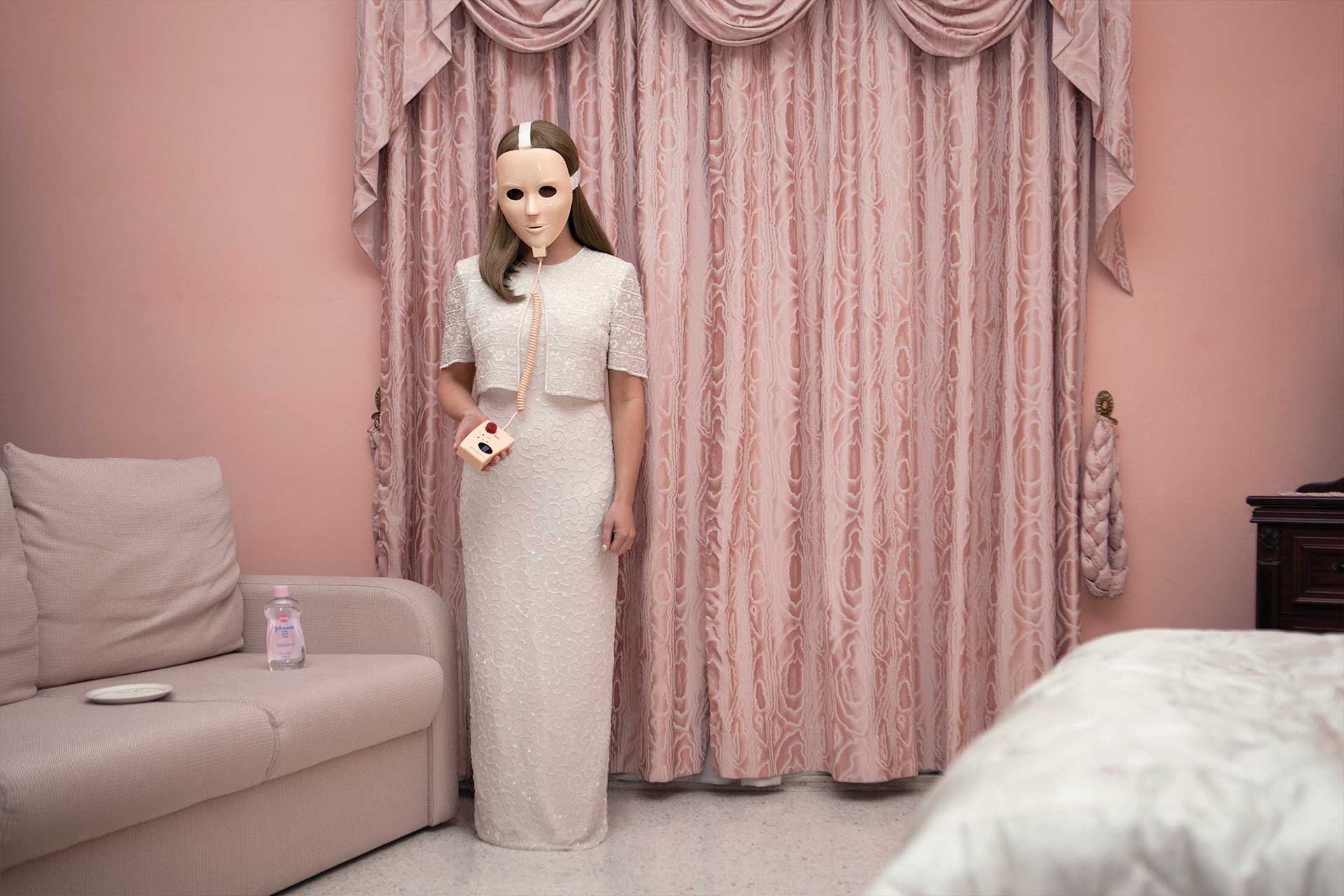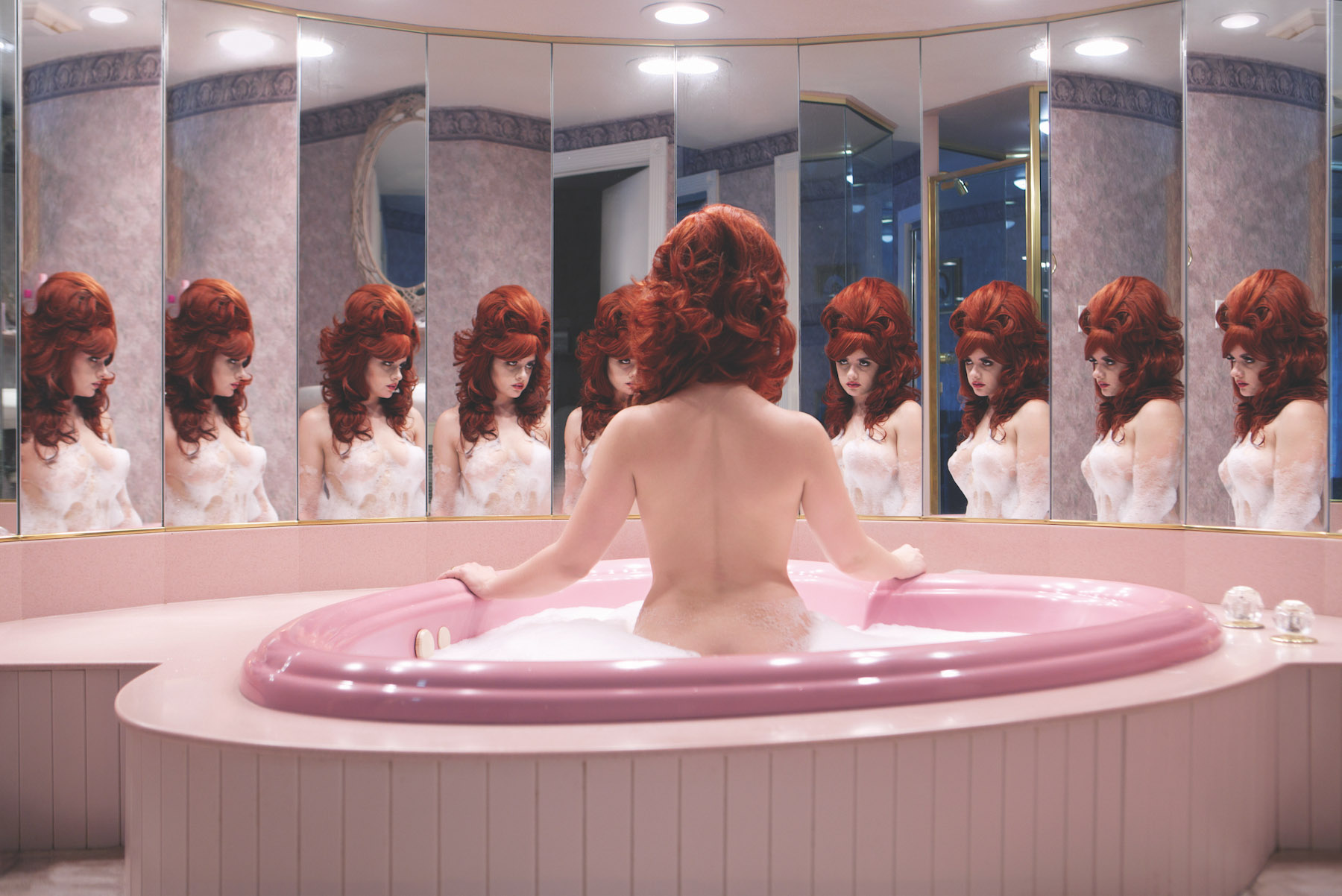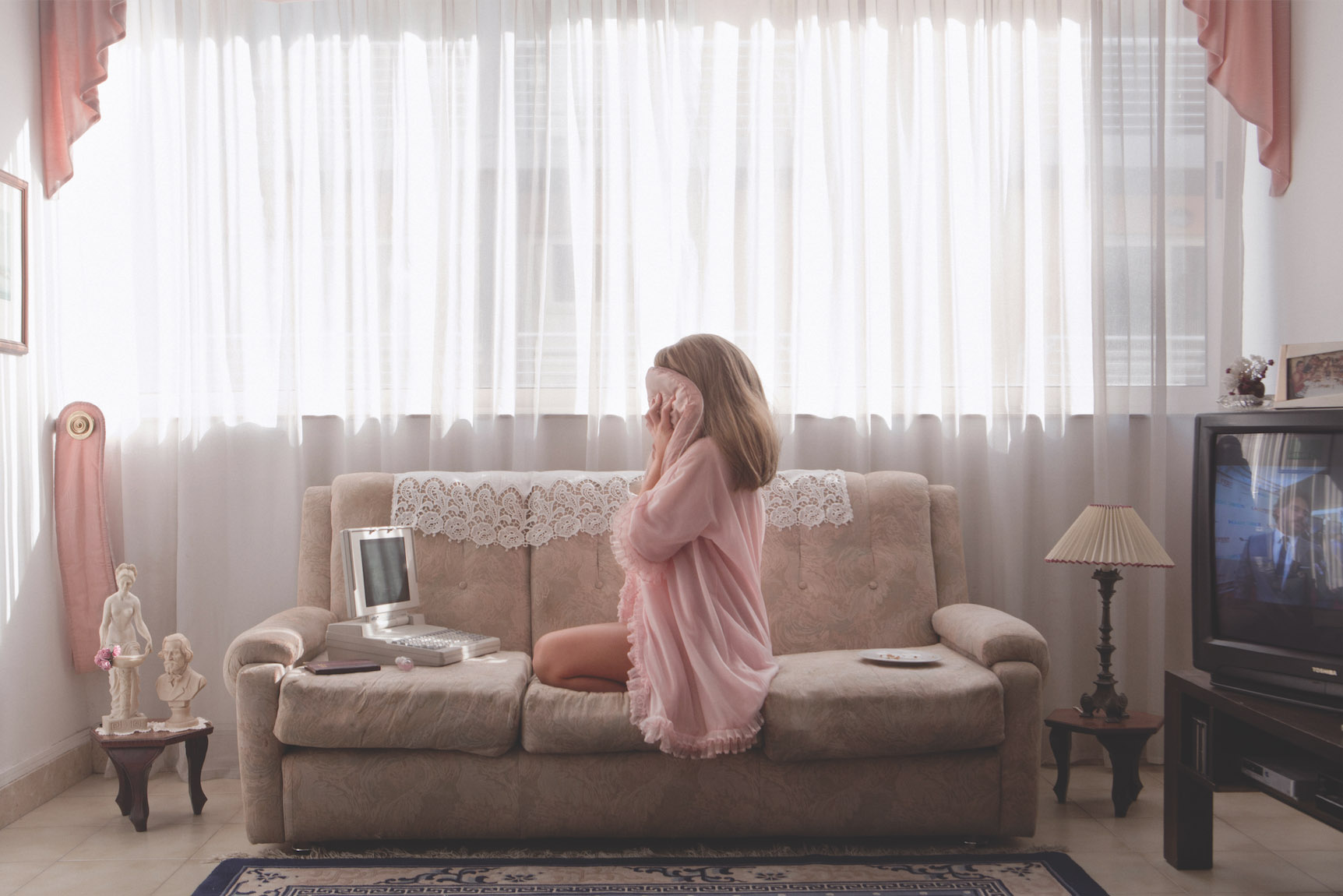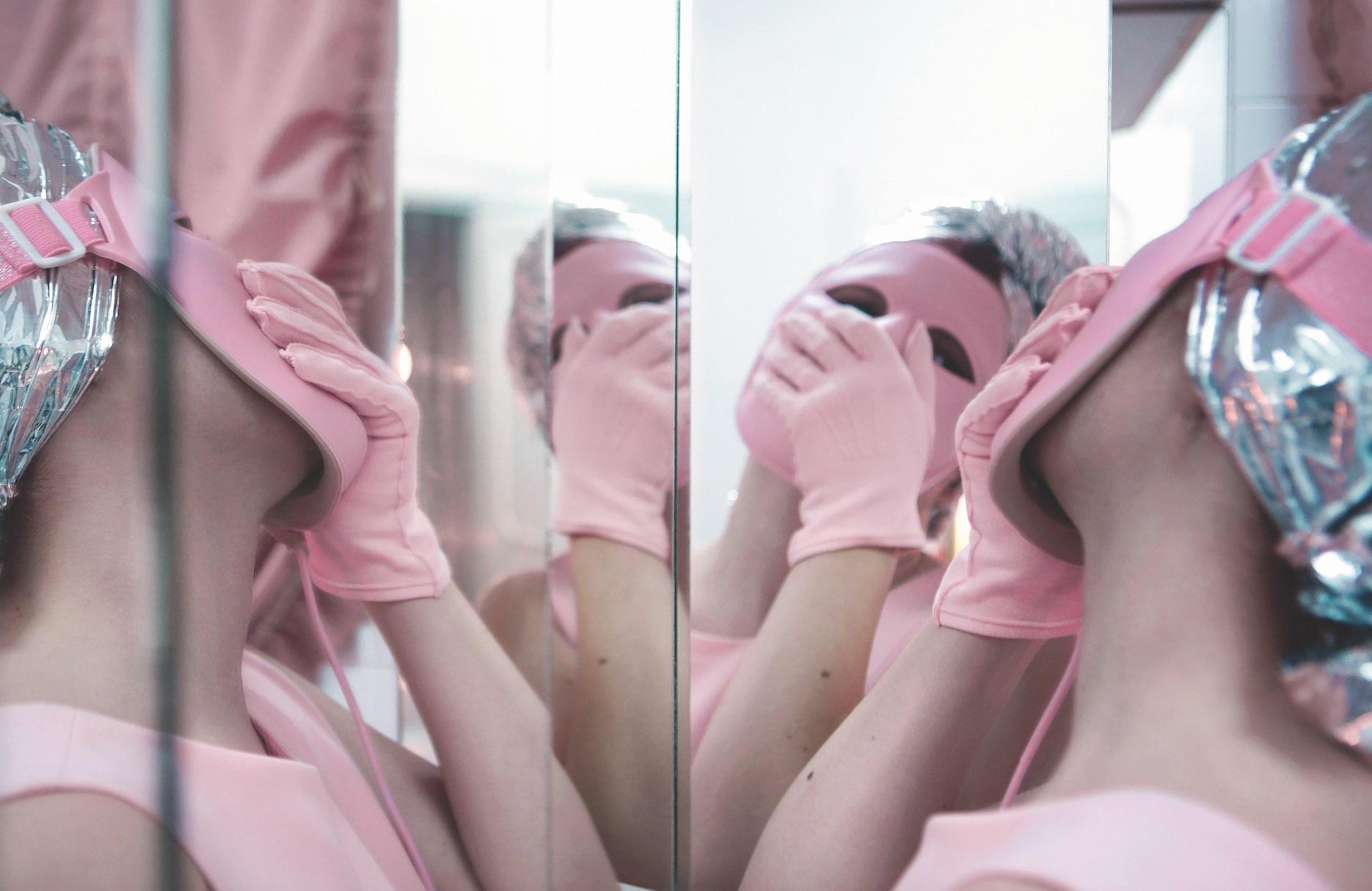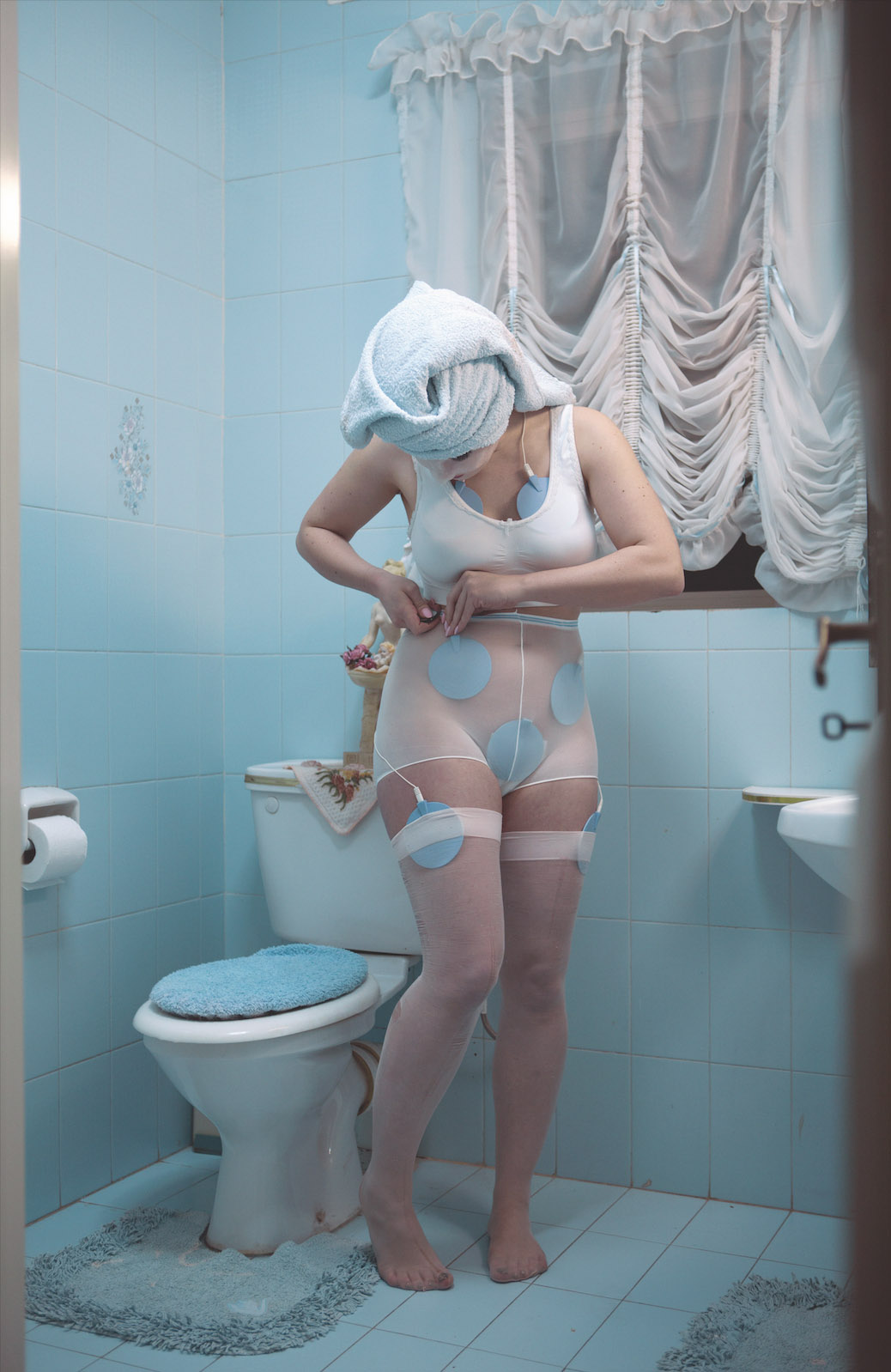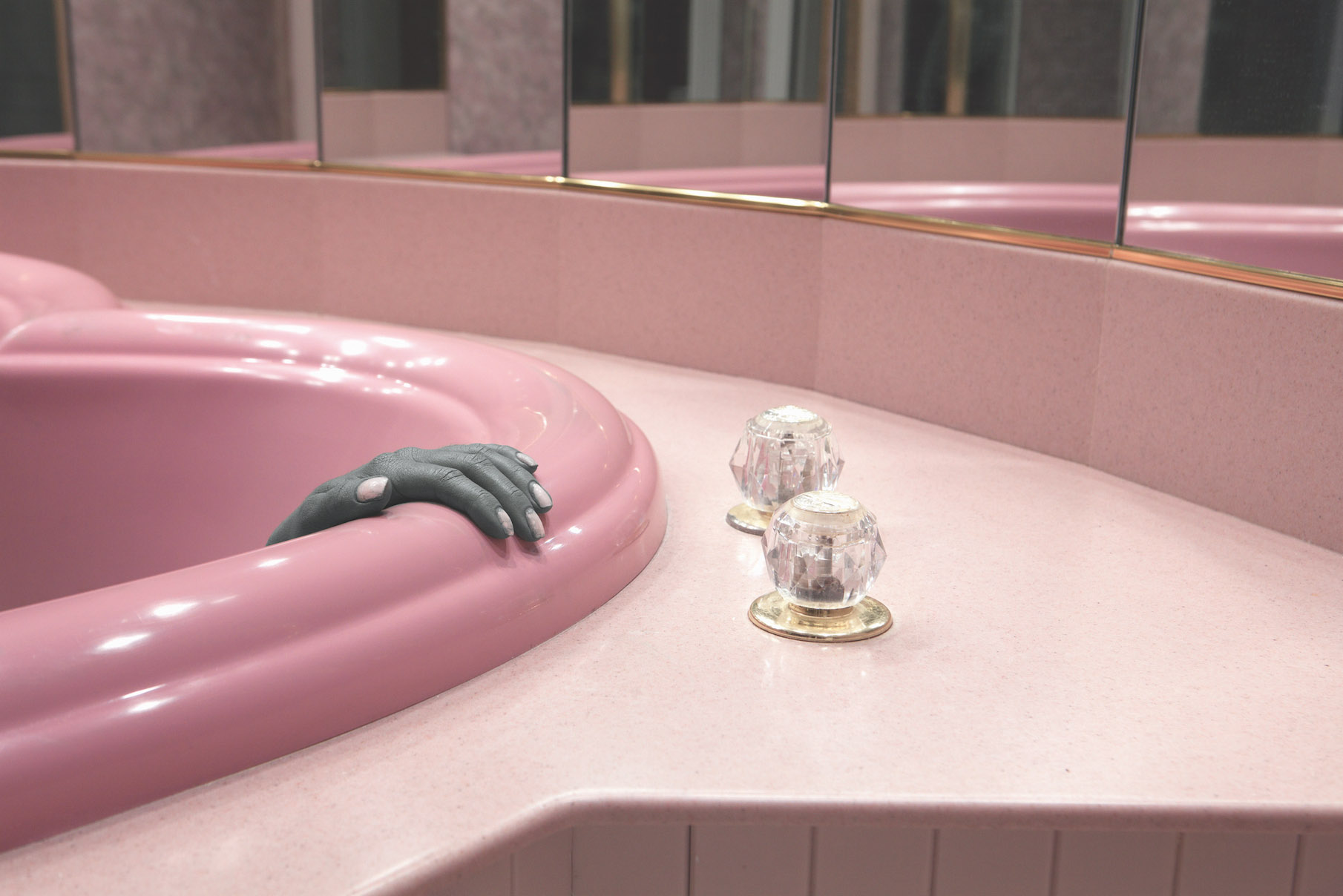JUNO CALYPSO - PLAYING WITH YOUR ALTER-EGO
PLAYING WITH YOUR ALTER-EGO
Juno Calypso loves to dress up. She always loved to take self-portraits, but recently gave her work a different swing by creating Joyce, a deadpan blond looking pretty in pink. In many ways, the young british photographer is more than merely a photographer. Juno looks for locations, builds sets and designs scenes for ‘her’ Joyce to shine.
Imaginary bedrooms and office spaces, in which Joyce honeymoons and works, allows Juno to explore concepts of beauty and femininity, often with the aid of such strange objects as an electric anti-wrinkle mask and vibratory face massager: consumerist symbols of progress used as tokens of nihilism and oppression. Juno talks to Plastik about her first camera, acting, the honeymoon hotel, Cindy Sherman and, of course, Joyce…
Juno, could you tell us a bit more about where are you from? And how would you define the city in three or so lines?
I’m born and raised in London where I still live. It’s hard to describe because I don’t know any different, but it’s a bit like having a really old best friend with a split personality.
Philppe Halsman caught the “photography virus” as a 15-year-old when he found his father’s camera in the attic, while Alex Prager got started having seen a William Eggleston exhibition. When did it all start for you?
I think it was when I got a Gameboy Camera when I was 8. It was the worst camera, but you could adjust the brightness and contrast and cover your pictures in cartoons and then print them out. Me
and my cousin would take pictures of each other dressed up as different characters.
You studied photography in Leeds and London. Could you tell us a bit more about the difference between both schools?
Leeds was much more technical. I spent a lot of time in the studio and the darkroom learning about lighting and printing. London College of Communication threw all of that out the window and taught me how to be an artist. Saying that, I did this one Photoshop retouching workshop while I was there that changed my life.
Following your graduation, you started taking self-portraits featuring your alter-ego “Joyce,” a lovely deadpann blond we see in series of office settings or “happy and fluffy in pink.” Tell us a bit more about Joyce? Who is she? Why was she born?
She’s a fictional character without a story. Creating Joyce was sort of decided for me. The practice was always there, but it was like I was waiting for permission to show it. I’d always taken pictures of myself in private. I was used to experimenting with photography and myself, but when it came to my ‘serious’ work, I’d only use models or friends. I was 19 and all I wanted was to make perfect pictures of perfect girls. Before these glamour shoots I’d always use myself as a stand in model to test things out alone. I’d pull faces or cover my face completely to make the pictures less awkward to look at. Each week at university we had to bring in new work and one week I had nothing to show except these shots of me acting like a fool. The tutorials were usually sharp and serious but my tutor just burst out laughing. She was the one who urged me to carry on with it. And so I did.
“Each week at university we had to bring in new work and one week I had nothing to show except these shots of me acting like a fool. The tutorials were usually sharp and serious but my tutor just burst out laughing. She was the one who urged me to carry on with it. And so I did.”
How do you create the image? You start on paper? Or do you first see an object that interests you?
I’m constantly looking out for props and costumes online or in second hand shops. Then when I know I have time to make work I’ll start location hunting. I have a long list but I’m always searching for somewhere better. It keeps me up all night. The Honeymoon Hotel I found was so perfect it’s going to take a lot of searching to beat that one. Once I have the location it’s almost easy from there. Almost. I just have to go there and see what happens. I don’t plan the poses or how I'm interacting with the room. I just pack a suitcase of wigs, costumes and props and improvise. For hours.
You’ve must have been asked the following a million times, but Cindy Sherman is someone who has become very famous with her self-portraits. Do you like her work? Do you consider her an influence?
Yes I love her. It’s inevitably true that she's had an influence on me, but I only got really into her work after I started the project. Her black and white work was referenced constantly during school, so I thought that’s all there was and didn’t look further into it. After I started this project I loved reading about her process because I don’t really know anyone else in real life who does exactly what I do. It was comforting. Then I discovered her more ‘disgusting’ work and fell in love.
What camera(s) do you use?
Either an Arca Swiss 6 x 9 film camera or a Canon 5D.
If not an artist-photographer, what would you have liked to be and why?
When I was younger I wanted to be an actress so probably that. I like playing out other people’s actions and emotions.
What’s the last photograph you saw that touched you?
A photograph of my best friend with her newborn son.
What would be your ideal Sunday?
In bed all day with someone I like.
What does 2016 have in store for Juno and Joyce?
I have a show at CABIN Gallery in London in the spring. And I’m working on my first book which I’m very excited about.
INTERVIEW BY PETER SPEETJENS

